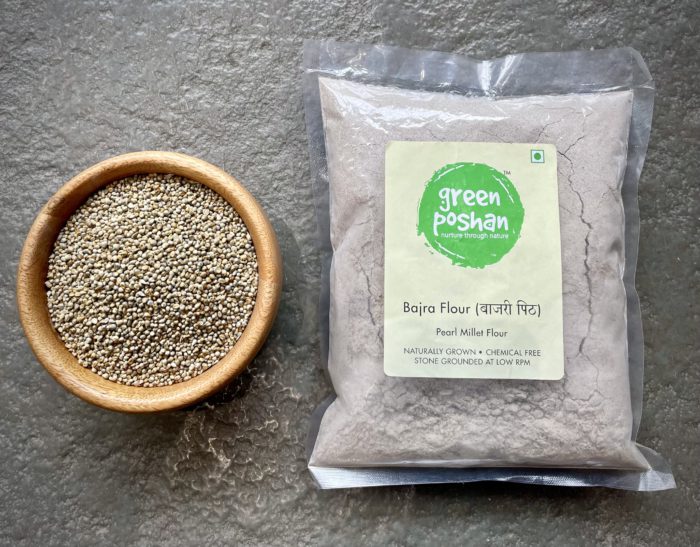In recent years, there’s been a growing buzz around millets—and for all the right reasons. People are rediscovering these ancient grains for their incredible health benefits and sustainability. One such grain is bajra, also known as pearl millet. However, despite its nutritional value, a common myth lingers: “Is bajra flour hard to digest?”
Let’s uncover the truth and bust some long-standing myths surrounding bajra flour, especially for those looking to adopt healthier, natural alternatives to refined grains.
What Is Bajra Flour?
Grinding pearl millet, a hardy grain that has been a dietary staple in India for centuries, produces it. Rich in fiber, protein, iron, magnesium, and essential amino acids, bajra is not just a filler grain—it’s a nutritional powerhouse.
Yet, its dense texture and earthy flavor often lead people to believe that it might be heavy on the stomach. So, is this really the case?
Myth: Bajra Flour Is Difficult to Digest
Truth: Bajra Flour Is Easy to Digest When Prepared Right
The myth that bajra is hard to digest usually stems from how it’s consumed. Like any grain, bajra may feel heavy if:
- It’s consumed in excess without balance
- It’s not cooked properly
- It’s combined with hard-to-digest foods
- The individual has a sensitive gut and is not used to high-fiber foods
But here’s the truth: bajra is naturally gluten-free, making it much gentler on the digestive system than wheat-based products for many people, especially those with gluten sensitivities.
Moreover, bajra contains insoluble fiber, which promotes regular bowel movement, and prebiotic properties that support healthy gut bacteria.
Understanding Your Body’s Response
If someone experiences bloating or heaviness after eating bajra, it may be due to a sudden shift to high-fiber food, not because bajra is inherently bad. Just like introducing any new whole grain into your diet, your gut needs time to adapt.
Pro tip: Start with small portions, chew thoroughly, and combine bajra flour with easily digestible foods like curd, ghee, or green leafy vegetables.
Bajra Flour Is Ideal For:
- Children: For stronger bones, immunity, and sustained energy
- Adults: To manage blood sugar levels, cholesterol, and gut health
- Elderly: For improved digestion, bone health, and weight control
- Fitness Enthusiasts: As a slow-digesting carb that fuels workouts
Why the Source of Bajra Matters
Many manufacturers chemically process bajra flour or add preservatives, so not all bajra flour is created equal. These additives can impact not only taste and nutrition but also digestibility.
At Green Poshan, we offer 100% chemical-free flour, naturally grown using traditional farming practices. Our bajra is:
- Free from harmful pesticides and fertilizers
- Stone-ground to preserve fiber and nutrition
- Packed and delivered without any artificial additives
This ensures the flour retains its natural goodness, is light on the stomach, and delivers maximum health benefits.
Bajra Flour — 500g
Experience the nourishment of nature with Green Poshan Bajra Flour, made from naturally grown bajra and stone-ground to preserve its nutritional integrity. Bajra, also known as pearl millet, is one of the oldest grains known to mankind and is celebrated for its impressive health benefits and earthy flavour. Our bajra flour is finely milled, making it ideal for everyday meals like rotis, khichdi, thalipeeth, and traditional winter recipes.
At Green Poshan, we bring you pure, additive-free flour crafted from responsibly sourced bajra—free from chemicals, artificial colours, or preservatives.
Bajra flour is made by grinding bajra (pearl millet), a naturally gluten-free grain known for its rich fibre content, high iron levels, and hearty taste. It is a staple in many Indian households, especially during winter months, as it helps build strength and provides long-lasting energy. Bajra flour is especially popular in rural and traditional Indian diets for its digestive and warming properties.
Final Verdict: Bajra Flour Is Not Hard to Digest
Consuming flour the right way and sourcing it in its purest form makes it easy to digest. It’s a valuable addition to your daily diet, especially if you’re looking to embrace wholesome, clean eating.
Looking for a healthy switch to natural grains?
Try Green Poshan’s chemical-free bajra flour and experience the difference—naturally.


